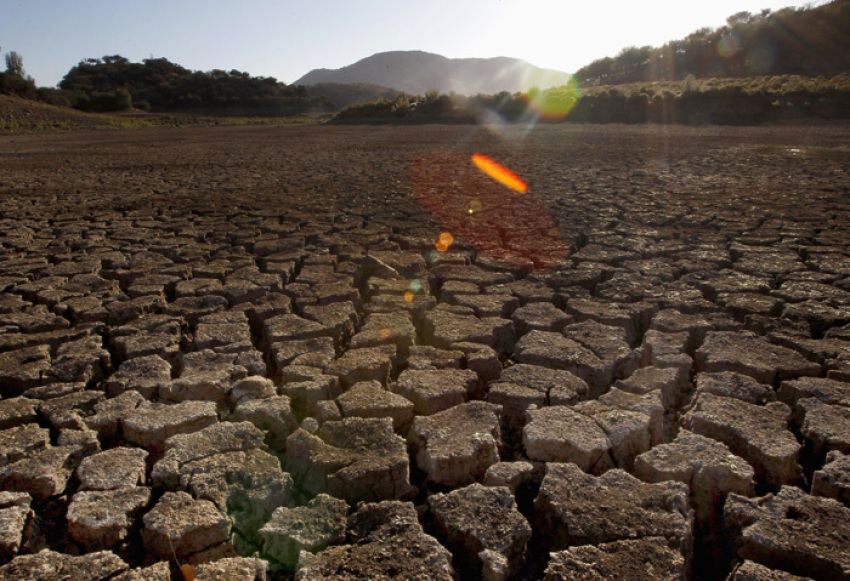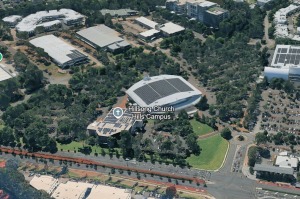Researchers claim biblical Sodom was destroyed by massive asteroid, scholars disagree

The Tall el-Hammam, an archaeological site in Jordan also known as TeHEP, is the biblical Sodom referenced in the biblical account of Sodom and Gomorrah, Steven Collins, chief archaeologist and co-director of the project, has claimed.
His claim comes on the heels of a report suggesting that Sodom, the ancient Syrian city God destroyed with burning sulfur because of sin, might have been razed by a massive asteroid.
In a YouTube interview with Gary A. Byers, dean of the College of Archaeology, Collins, a Trinity Southwest University and TeHEP assistant director, who originally went to the site in Jordan because he thought it was the biblical Sodom, confirmed Friday that he believes is.
“I was really convinced, based on the geography and its size, which is way bigger by several orders of magnitude than all the other sites around it. [It’s] 10 times bigger than Jericho at the time, 10 times bigger than Jerusalem at the time. So it’s really, really big, and so I thought this has to be it. We now know that it is. It’s the site of biblical Sodom,” Collins told Byers.
Tall el-Hammam is located in the Eastern section of the lower Jordan Valley near the mouth of the Jordan River. It’s the subject of a joint scientific project between Trinity Southwest University's College of Archaeology & Biblical History in Albuquerque, New Mexico, Veritas International University's College of Archaeology & Biblical History in Santa Ana, California, and the Department of Antiquities of the Hashemite Kingdom of Jordan.
The claim from Collins, who is also dean of the College of Archaeology, Veritas International University and a consulting research professor at Trinity Southwest University, comes less than two weeks after the publication of a new study, titled “A Tunguska sized airburst destroyed Tall el-Hammam a Middle Bronze Age city in the Jordan Valley near the Dead Sea.” The study suggests the story of Tall el-Hammam is the story of Sodom.
“We present evidence that in ~ 1650 BCE (~ 3600 years ago), a cosmic airburst destroyed Tall el-Hammam, a Middle-Bronze-Age city in the southern Jordan Valley northeast of the Dead Sea. The proposed airburst was larger than the 1908 explosion over Tunguska, Russia, where a ~ 50-m-wide bolide detonated with ~ 1000× more energy than the Hiroshima atomic bomb,” researchers noted.
“A city-wide ~ 1.5-m-thick carbon-and-ash-rich destruction layer contains peak concentrations of shocked quartz (~ 5–10 GPa); melted pottery and mudbricks; diamond-like carbon; soot; Fe- and Si-rich spherules; CaCO3 spherules from melted plaster; and melted platinum, iridium, nickel, gold, silver, zircon, chromite and quartz.”
Researchers said they dismissed eight out of 10 possible causes for the evidence they found at the Tall el-Hammam site — including volcanism, warfare, and tectonism — “that can account for at least some, but not all, of the evidence.”
“We conclude that the only plausible formation mechanism that can account for the entire range of evidence … is a crater-forming impact or a cosmic airburst, most likely somewhat larger than the 22-megaton airburst at Tunguska, Siberia, in 1908. The data also suggest an airburst occurred a few kilometers SW of Tall el-Hammam causing, in rapid succession, a high-temperature thermal pulse from the fireball that melted exposed materials, including roofing clay, mudbricks, and pottery,” they wrote.
“This was followed by a high-temperature, hypervelocity blast wave that demolished and pulverized mudbrick walls across the city, leveling the city, and causing extensive human mortality."
They further noted that an “anomalously high salt content in the debris matrix is consistent with an aerial detonation above high-salinity sediments near the Jordan River or above the hypersaline Dead Sea. This event, in turn, distributed salt across the region, severely limiting regional agricultural development for up to ~ 600 years.”
In the account of Sodom and Gomorrah in the Bible, God destroyed the city during the time of Abraham because of wickedness. While two angels were visiting Lot in the city, a gang of men attacked his home and demanded that he give up the angels so they could rape them — turning down even an offer of Lot’s virgin daughters. The angels blinded the men during the attack before leading Lot and his family out of the city, warning them not to look back. Because Lot’s wife disobeyed the order, she turned into a pillar of salt.
In the study, researchers argue that the Genesis account of what happened in Sodom and Gomorrah is the only known ancient writing that provides a plausible explanation for the evidence they found at Tall el-Hammam.
“Regarding this proposed airburst, an eyewitness description of this 3,600-year-old catastrophic event may have been passed down as an oral tradition that eventually became the written biblical account about the destruction of Sodom,” they said.
“There are no known ancient writings or books of the Bible, other than Genesis, that describe what could be construed as the destruction of a city by an airburst/impact event. This airburst/impact hypothesis would make Tall el-Hammam the second oldest known city/town to have been destroyed by an airburst/impact event that produced extensive human casualties, after Abu Hureyra, Syria.”
Collins explained in his interview Friday that Sodom was really a hub where several trade routes converged, attracting “virtually every biblical character of note.”
“The Bible puts a lot of stuff in this area and if you know the geography, it’s easy to see that virtually every biblical character of note came to this area at one time or another in their life,” he said.
“You go back, of course, Abraham and Lot and all of his sons and Isaac and Jacob were there. Jacob’s body was actually taken to the area. Kind of a mourning and a funeral was done there,” he continued. “Moses and Joshua were there, and Elijah was later there. The Bible talks about King David crossing … just everybody was there. You get to the New Testament, Jesus came over and preached in this area. John the Baptist was baptizing in this area.”
Mark Boslough, a physicist at Sandia National Laboratories in New Mexico and a fellow of the Committee for Skeptical Inquiry, has raised a number of concerns about the study.
On Twitter, Boslough noted that “my model of asteroid airbursts is cited as the mechanism by which God smote this evil city.” He pointed out that the senior author of the study was Phillip Silvia, an “engineer, theologian, archaeologist” who also serves as director of publications at Trinity Southwest University, an unaccredited evangelical school located in a strip mall in Albuquerque. Retraction Watch also noted that Silvia earned his Ph.D. from Trinity Southwest in 2015.
Elisabeth Bik, a Dutch microbiologist and scientific integrity consultant, also raised concerns about the study being overseen by “an unaccredited evangelical Christian institution.”
“This does not necessarily mean something, but it is remarkable that this archeological research was overseen by an unaccredited evangelical Christian institution that pursues a divine authority and the Bible as the only written representation of reality,” she wrote on Twitter.
Archaeologist Steven Ortiz, director of Lipscomb University’s Lanier Center for Archaeology and co-director of the recent Tel Gezer excavations, also rejected the meteor hypothesis in a report from the Biblical Archaeology Society.
He argued that destruction layers similar to those found in Tall el-Hammam have been found at Bronze and Iron Age Gezer and were attributed to Egyptian and Assyrian armies.
Aren Maier, an archaeologist at Bar-Ilan University and long-time excavator of Tell es-Safi (biblical Gath), also noted that evidence for King Hazael’s ninth century B.C.E. destruction of Gath looks much like what was found at Tall el-Hammam.
Silvia, in a statement to Retraction Watch, called the criticisms leveled at the study “ad hominem attacks against the authors (including myself) and the institutions (like TSU) and affiliations (like the Comet Research Group) with which we are associated.”
“None of their comments address the science within our paper, probably because they have nothing of value to add to the discussion. It’s a classic example of character assassination substituted for a rational discussion of the evidence. What motivates it? Who’s to say?” he added.



























